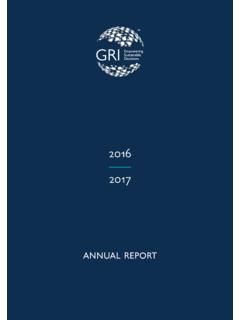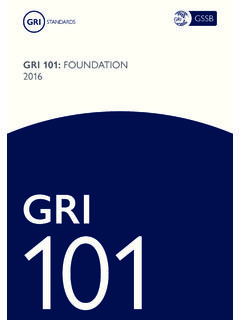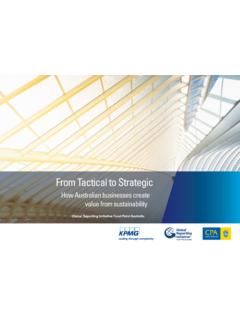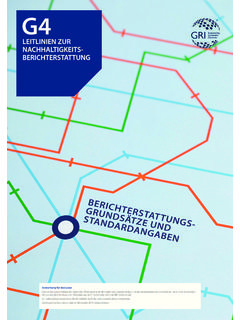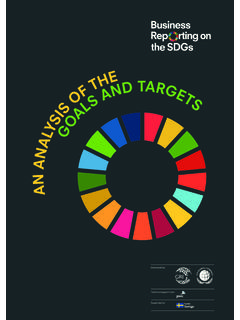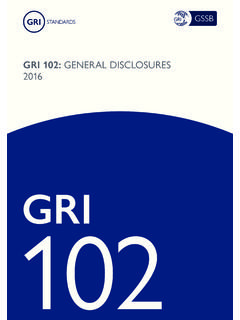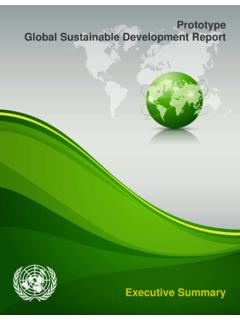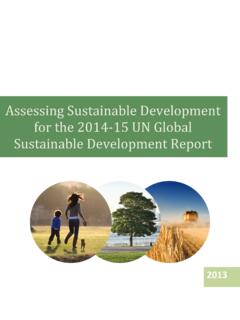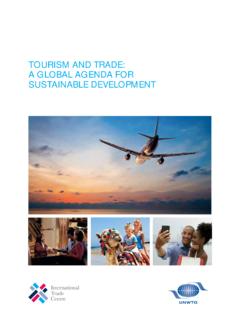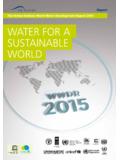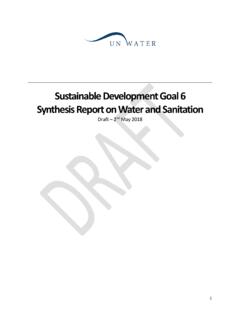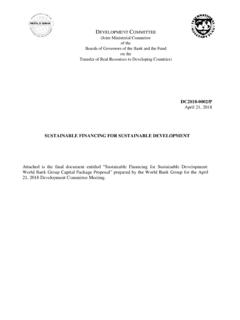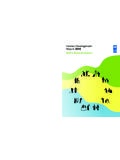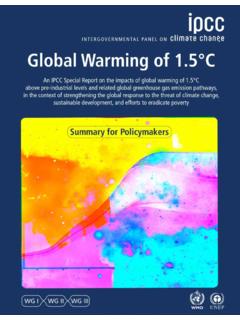Transcription of Sustainability Reporting Guidelines
1 Sustainability Reporting Guidelines RG 2000-2011 GRIV ersion 2000-2011 GRIV ersion Reporting GuidelinesRGVersion of ContentsPrefaceSustainable development and the Transparency Imperative IntroductionOverview of Sustainability ReportingThe Purpose of a Sustainability report 3 Orientation to the GRI Reporting Framework 3 Orientation to the GRI Guidelines 4 Applying the Guidelines 5 Part 1 Defining report Content, Quality, and BoundaryGuidance for Defining report Content 7 Principles for Defining report Content 8 Principles for Defining report Quality 13 Guidance for report Boundary Setting 17 Part 2 Standard DisclosuresStrategy and Profile 201.
2 Strategy and Analysis 202. Organizational Profile 213. report Parameters 214. Governance, Commitments, and Engagement 225. Management Approach and Performance Indicators 24 Economic 25 Environmental 27 Social:Labor Practices and Decent Work 30 Human Rights 32 Society 36 Product Responsibility 39 General Reporting NotesData Gathering 40 report Form and Frequency 40 Assurance
3 41 Glossary of Terms 422 Sustainability Reporting GuidelinesRG 2000-2011 GRIP reface sustainable development and the Transparency ImperativeThe goal of sustainable development is to meet the needs of the present without compromising the ability of future generations to meet their own needs. 1 As key forces in society, organizations of all kinds have an important role to play in achieving this in this era of unprecedented economic growth, achieving this goal can seem more of an aspiration than a reality.
4 As economies globalize, new opportunities to generate prosperity and quality of life are arising though trade, knowledge-sharing, and access to technology. However, these opportunities are not always available for an ever-increasing human population, and are accompanied by new risks to the stability of the environment. Statistics demonstrating positive improvements in the lives of many people around the world are counter-balanced by alarming information about the state of the environment and the continuing burden of poverty and hunger on millions of people.
5 This contrast creates one of the most pressing dilemmas for the 21st century. One of the key challenges of sustainable development is that it demands new and innovative choices and ways of thinking. While developments in knowledge and technology are contributing to economic development , they also have the potential to help resolve the risks and threats to the Sustainability of our social relations, environment, and economies. New knowledge and innovations in technology, management, and public policy are challenging organizations to make new choices in the way their operations, products, services, and activities impact the earth, people, and economies.
6 The urgency and magnitude of the risks and threats to our collective Sustainability , alongside increasing choice and opportunities, will make transparency about economic, environmental, and social impacts a fundamental component in effective stakeholder relations, investment decisions, and other market relations. To support this expectation, and to communicate clearly and openly about Sustainability , a globally shared framework of concepts, consistent language, and metrics is required. It is the global Reporting Initiative s (GRI) mission to fulfil this need by providing a trusted and credible framework for Sustainability Reporting that can be used by organizations of any size, sector, or location.
7 Transparency about the Sustainability of organizational activities is of interest to a diverse range of stakeholders, including business, labor, non-governmental organizations, investors, accountancy, and others. This is why GRI has relied on the collaboration of a large network of experts from all of these stakeholder groups in consensus-seeking consultations. These consultations, together with practical experience, have continuously improved the Reporting Framework since GRI s founding in 1997. This multi-stakeholder approach to learning has given the Reporting Framework the widespread credibility it enjoys with a range of stakeholder World Commission on Environment and development .
8 Our Common Future. Oxford: Oxford University Press, 1987, Reporting GuidelinesRGVersion of Sustainability Reporting The Purpose of a Sustainability ReportSustainability Reporting is the practice of measuring, disclosing, and being accountable to internal and external stakeholders for organizational performance towards the goal of sustainable development . Sustainability Reporting is a broad term considered synonymous with others used to describe Reporting on economic, environmental, and social impacts ( , triple bottom line, corporate responsibility Reporting , etc.)
9 A Sustainability report should provide a balanced and reasonable representation of the Sustainability performance of a Reporting organization including both positive and negative contributions. Sustainability reports based on the GRI Reporting Framework disclose outcomes and results that occurred within the Reporting period in the context of the organization s commitments, strategy, and management approach. Reports can be used for the following purposes, among others: Benchmarking and assessing Sustainability performance with respect to laws, norms, codes, performance standards, and voluntary initiatives; Demonstrating how the organization influences and is influenced by expectations about sustainable development ; and Comparing performance within an organization and between different organizations over time.
10 Orientation to the GRI Reporting FrameworkAll GRI Reporting Framework documents are developed using a process that seeks consensus through dialogue between stakeholders from business, the investor community, labor, civil society, accounting, academia, and others. All Reporting Framework documents are subject to testing and continuous improvement. The GRI Reporting Framework is intended to serve as a generally accepted framework for Reporting on an organization s economic, environmental, and social performance. It is designed for use by organizations of any size, sector, or location.

